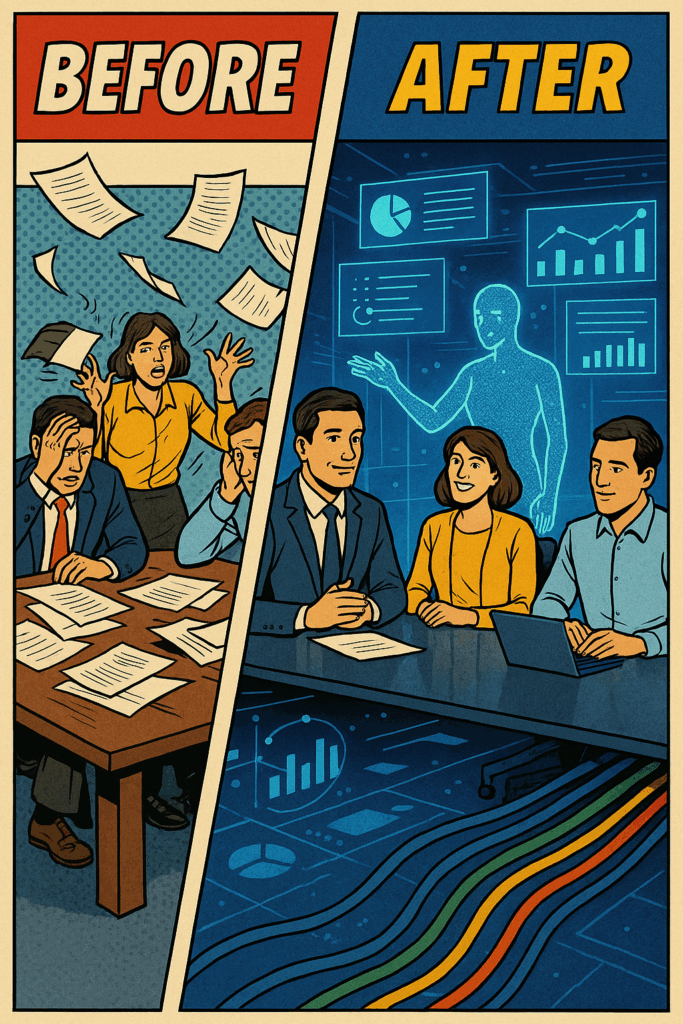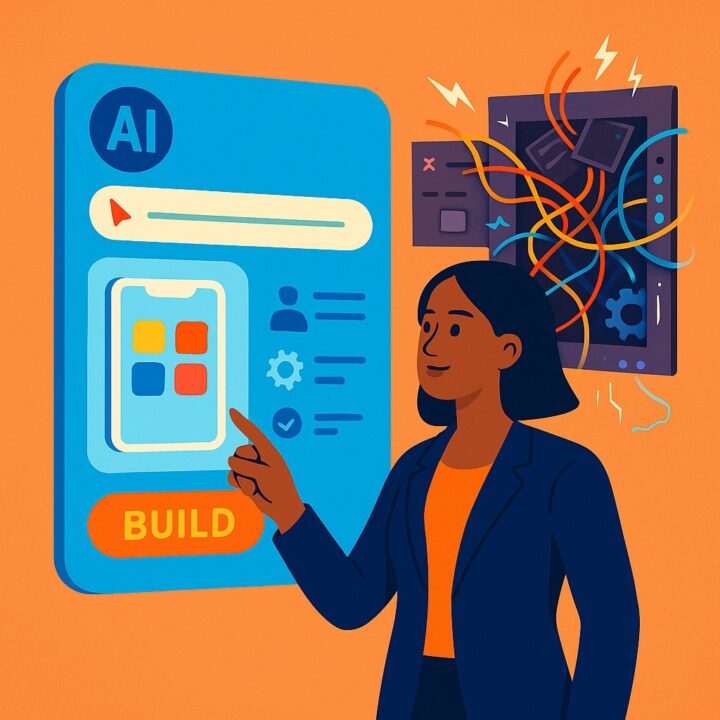The initial phase of any consulting engagement – discovery and requirements gathering – is arguably the most critical. It’s where the foundation for success is laid, where client needs are unearthed, goals are defined, and the path forward is charted. Yet, for many consultants, this phase is also the most fraught with challenges, a complex knot of logistical hurdles, communication barriers, and cognitive demands. When done poorly, the consequences ripple outwards, contributing significantly to project delays, budget overruns, and ultimately, failure to deliver the expected value.
Industry statistics paint a stark picture. A significant percentage of projects fail to meet their original goals, often citing inaccurate requirements gathering as a primary culprit. Some studies suggest over 70% of failed projects miss the mark due to requirements issues. The cost isn’t just frustration; it’s tangible. Rework consumes vast amounts of time – one survey indicated project professionals spend as much as half their time on it. The financial implications are staggering, with failed IT projects alone costing economies billions annually.
Consultants operate at the sharp end of this challenge. They are tasked with navigating complex organizational structures, extracting nuanced information from diverse stakeholders, synthesizing vast amounts of data, and translating it all into a clear, actionable plan – often under tight deadlines and immense pressure. The traditional toolkit, heavily reliant on manual processes and lengthy workshops, is increasingly strained. But amidst these challenges, a technological dawn is breaking. Artificial intelligence (AI) and automation are emerging not as replacements for skilled consultants, but as powerful augments, offering the potential to streamline processes, enhance insights, and alleviate many of the long-standing pain points inherent in discovery. Can these technologies truly untangle the discovery knot?

The cornerstone of traditional discovery is often the workshop – a dedicated session (or series of sessions) bringing stakeholders together. While valuable for collaboration, the typical workshop format often suffers from inherent inefficiencies that drain time and energy.
- Marathon Sessions & Diminishing Returns: Consultants frequently find themselves facilitating multi-hour, sometimes multi-day, workshops attempting to cover everything from introductions and basic context-setting to deep dives into complex processes and requirements definition. The sheer length often leads to participant fatigue. As energy wanes, focus drifts, contributions become less insightful, and the quality of the output inevitably suffers. While collaboration is key, the human brain isn’t designed for hours upon hours of sustained, high-intensity analytical thinking in a group setting. Standard one-hour meeting slots, often dictated by corporate calendars, are frequently insufficient for the deep thinking required, with significant portions lost to setup, pleasantries, and wrap-up, leaving perhaps only 35-40 minutes for actual work.
- The Groundhog Day of Basic Discovery: How much valuable workshop time is spent simply asking foundational questions? “Tell me about your current process.” “Which systems are involved?” “Who are the key users?” While necessary, dedicating prime synchronous time with multiple (often highly paid) stakeholders to cover basics that could have been gathered beforehand is inefficient. This repetition can frustrate clients who feel their time isn’t being used effectively and prevents the group from quickly reaching the core complexities where collaborative problem-solving is most needed. The prevalence of meeting fatigue and the sentiment that workers lack sufficient time for focused work highlight the need to optimize synchronous interactions.
- The Logistical Labyrinth: Coordinating schedules for a diverse group of essential stakeholders – potentially spanning different departments, locations, and time zones – is a significant challenge. Finding a block of time where everyone critical is available can delay project kick-offs by weeks. Even when scheduled, key individuals might be unavailable at the last minute, leaving gaps in knowledge or requiring costly follow-up sessions. Virtual workshops, while offering flexibility, present their own challenges in maintaining engagement and facilitating nuanced discussion over extended periods.
The Promise of AI & Automation: Imagine an AI assistant analyzing preliminary documents and call transcripts to generate a baseline understanding before a workshop. It could identify key stakeholders and suggest targeted pre-workshop questionnaires or asynchronous requests for foundational information (like process overviews or system inventories). This ‘deconstructed’ approach reserves precious synchronous workshop time for validating understanding, tackling complex issues, and collaborative design. AI could also help schedule these focused sessions by analyzing calendars and suggesting optimal times for smaller, targeted groups. Post-meeting, AI could instantly generate concise summaries and action items, ensuring clarity and maintaining momentum without manual transcription and synthesis.
The Perils of Poor Definition: Requirements Quality and Scope Creep
Even with efficient processes, the ultimate goal is to define the right requirements clearly and comprehensively. Failure here is devastatingly common and costly.
- The Quicksand of Ambiguity: Requirements that are vague, incomplete, contradictory, or simply misunderstood are a primary driver of project failure. Requirements gathered hastily or without structured validation are often unclear, misunderstood, or simply missing critical details. This leads directly to rework, delays, and solutions that don’t meet business needs. Over 70% of failed projects reportedly miss the mark due to requirements issues. Only 23% of PMs and stakeholders agree when a project is truly “done,” indicating.
- The Exponential Cost of Late Discovery: Finding a requirements error during the design phase is costly. Finding it during testing is significantly more so. Finding it after launch can be catastrophic, potentially costing 100 times more to fix than if caught during the initial definition phase. Beyond the direct costs of rework, poorly defined requirements lead to faulty products, damaged reputations, lost revenue, and eroded customer trust. Even a modest improvement in requirements quality early on can yield substantial savings down the line.
- The Hydra of Scope Creep: Uncontrolled expansion of project requirements beyond the initial agreement – scope creep – plagues an estimated 50% or more of projects. It often stems directly from poor initial requirements definition or the lack of a robust process for managing changes. Each “small addition” adds time, cost, and complexity, often derailing schedules and blowing budgets. Managing scope creep effectively requires a clear, agreed-upon baseline and a disciplined approach to evaluating changes.
The Promise of AI & Automation: AI tools analyzing meeting transcripts, emails, and documents can help identify potential ambiguities, inconsistencies, or gaps in requirements discussions in near real-time. By flagging these issues proactively, AI acts as a safety net, prompting consultants to seek clarification earlier. AI can assist in generating structured requirements documentation from unstructured conversations, ensuring consistency and potentially linking requirements back to specific business goals or stakeholder comments for traceability. Visual modeling tools, potentially augmented by AI, could help create clearer representations of processes or solutions, facilitating better understanding and validation. For scope management, AI can help maintain a clear baseline by tracking requirements and decisions, making it easier to identify when a new request constitutes a change requiring formal evaluation against the established scope, budget, and timeline.
Navigating the Human Element: Stakeholder and Alignment Challenges
Discovery is fundamentally a human process, requiring skillful navigation of organizational dynamics and individual perspectives.
- Herding Cats: Achieving Stakeholder Alignment: Projects often involve numerous stakeholders with diverse backgrounds, priorities, and levels of understanding. Achieving consensus on goals, requirements, and priorities among these groups is notoriously difficult. Misalignment breeds confusion, leads to conflicting requirements, stalls decision-making, and can ultimately sabotage project success. A stunningly low percentage of project professionals feel the project’s business objectives are clear to them, highlighting this pervasive alignment gap.
- The Engagement Enigma: Getting consistent, focused engagement from busy subject matter experts and senior leaders is a constant struggle. Key individuals may be overcommitted, unresponsive, or only partially engaged during critical discussions. Decisions made without their input can be flawed, leading to rework when they eventually re-engage and identify issues. Consultants spend considerable effort chasing input and managing participation.
- Bridging the Divide: Building Shared Understanding: Creating a common language and mental model across technical teams, business users, and end customers is essential but challenging. Jargon, assumptions, and differing perspectives can lead to profound misunderstandings. The consultant acts as a translator and bridge-builder, but ensuring everyone truly shares the same vision for a complex solution requires significant effort and clear communication artifacts. Poor communication remains a top contributor to project failure.
The Promise of AI & Automation: AI analyzing communication patterns across emails, chat, and meetings could potentially identify early signs of misalignment or sentiment shifts among stakeholders. Imagine receiving an alert: “Stakeholder group A consistently expresses skepticism about Requirement X, while Group B champions it.” This allows the consultant to proactively address the divergence. Shared digital collaboration spaces, potentially powered by AI, can provide a central hub for all project information, requirements drafts, and feedback, ensuring everyone works from the same source of truth. AI could generate different views or summaries of requirements tailored to specific stakeholder roles (e.g., a technical view for engineers, a business process view for operations). Asynchronous feedback mechanisms within these platforms can make it easier for busy stakeholders to provide input on their own schedule. AI-generated visualizations or interactive prototypes based on gathered requirements can make abstract concepts tangible, facilitating a common understanding far more effectively than dense documents alone.

Beyond the process and stakeholder challenges, the discovery phase places significant demands on the consultant themselves.
- The Preparation Gauntlet: Effective discovery requires deep preparation. Consultants must research the client’s industry, understand their business context, analyze existing documentation, plan workshop agendas, prepare interview questions, and develop hypotheses or potential insights – often before the first “official” discovery meeting. For unique, “snowflake” projects lacking established patterns, this bespoke preparation is incredibly time-consuming and resource-intensive.
- The Content Creation Treadmill: Discovery isn’t just about talking; it’s about documenting and communicating. Consultants constantly create content: meeting agendas, interview notes, workshop summaries, process flow diagrams, requirements lists, user stories, validation documents, presentation decks. Generating high-quality, tailored versions of these artifacts for each specific engagement represents a massive time commitment and potential bottleneck.
- The Burnout Balancing Act: The combination of long hours (consultants often average over 50 per week), intense client pressure, tight deadlines, the cognitive load of absorbing and synthesizing complex information, and the emotional labor of managing diverse stakeholders creates a high-stress environment. Burnout is a significant risk in the consulting profession, often driven by workload imbalance and insufficient time for deep, focused work. The discovery phase, with its inherent ambiguity and intensity, can be a major contributor.
The Promise of AI & Automation: AI can act as a powerful research assistant, rapidly analyzing industry reports, client background information, and past project data to provide consultants with contextual insights before engagements. It can automate the generation of first drafts for various discovery artifacts – meeting agendas based on objectives, summaries from transcripts, structured requirements lists from notes, process map outlines from descriptions – significantly reducing the manual content creation burden. By handling routine information processing and documentation tasks, AI can free up consultant bandwidth, allowing them to focus on higher-value strategic thinking, complex problem-solving, and relationship building. Automating parts of the workflow and improving process efficiency can contribute to better workload management and potentially reduce the factors leading to burnout.
Navigating the Future: Challenges and Considerations
While the potential of AI and automation in discovery is immense, realizing it requires careful consideration. Implementing these technologies involves challenges: technical integration complexities between different systems, the cost of investment, the need for new skills and training for consultants, and ensuring data quality. Transparency with clients about how their data is used will be paramount for maintaining trust. Furthermore, over-reliance on AI without critical human oversight risks generating flawed insights or undermining the authentic human connection that remains vital in consulting.
Conclusion: Towards Augmented Discovery
The discovery and requirements gathering phase in consulting is undeniably challenging, fraught with inefficiencies, risks, and pressures that impact consultants, clients, and project outcomes alike. The traditional reliance on manual processes and lengthy, all-encompassing workshops often falls short in the face of modern project complexity and stakeholder demands.
AI and automation offer not a replacement for the consultant’s expertise, but a powerful set of tools to augment their capabilities. By intelligently analyzing interactions, streamlining information gathering, automating content generation, facilitating alignment, and reducing administrative burden, these technologies hold the promise of transforming discovery. They can help untangle the logistical knots, clarify ambiguities earlier, manage scope more effectively, foster deeper shared understanding, and alleviate the intense pressure on consultants.
The journey towards AI-augmented discovery requires thoughtful strategy, investment in technology and training, and an unwavering commitment to ethical practices and human oversight. But for consulting firms willing to embrace this evolution, the potential rewards are substantial: more efficient processes, higher quality requirements, reduced project risk, improved client satisfaction, and a more sustainable, impactful way for consultants to deliver value from the very start of every engagement. The future of discovery isn’t about replacing human insight, but about amplifying it.









